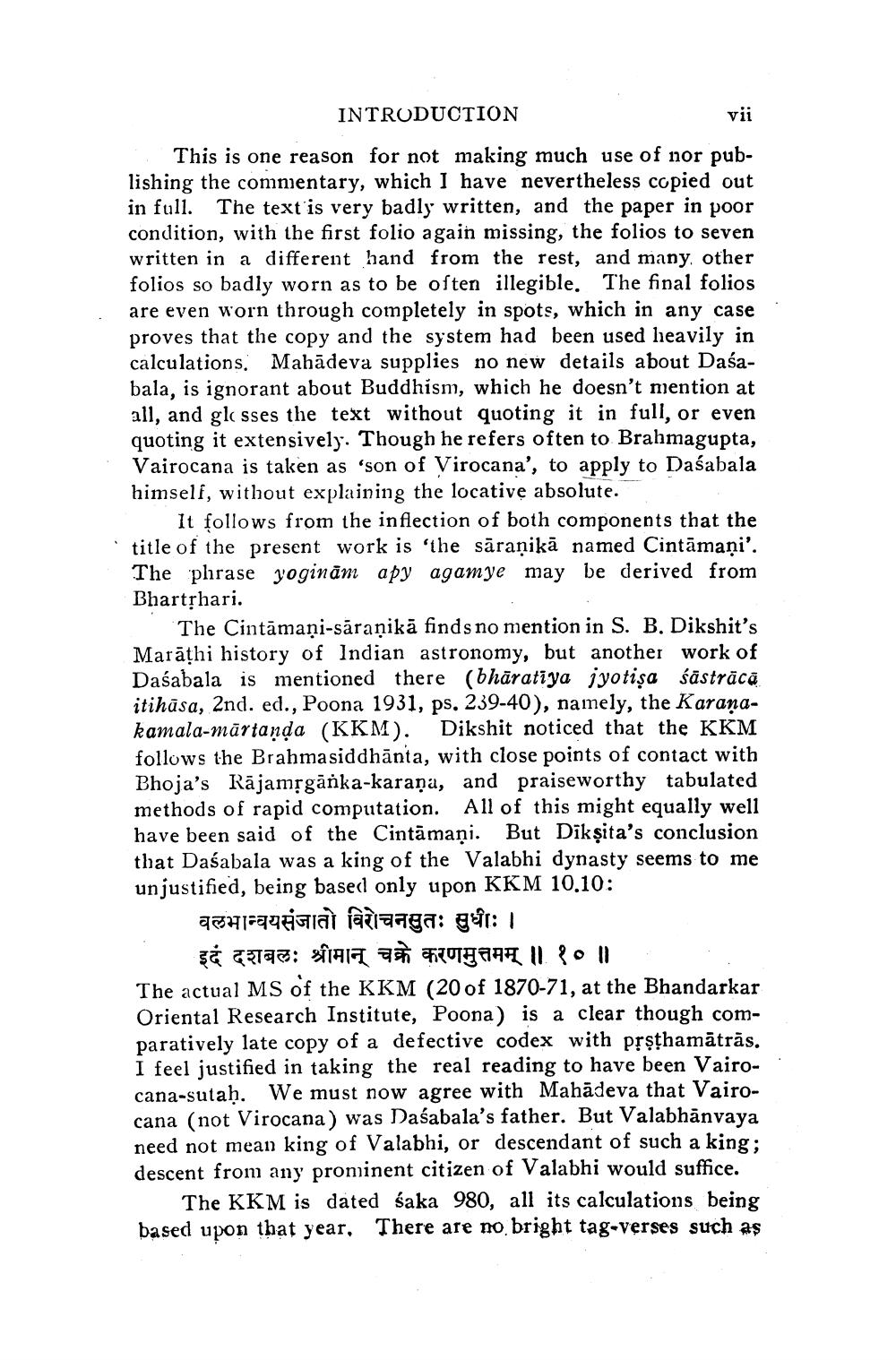Book Title: Cintamani Sarnika Of Dasabala Author(s): Dharmanand Kosambi Publisher: D D Kosambi View full book textPage 5
________________ INTRODUCTION vii This is one reason for not making much use of nor publishing the comnientary, which I have nevertheless copied out in full. The text is very badly written, and the paper in poor condition, with the first folio again missing, the folios to seven written in a different hand from the rest, and many other folios so badly worn as to be often illegible. The final folios are even worn through completely in spots, which in any case proves that the copy and the system had been used heavily in calculations. Mahādeva supplies no new details about Daśabala, is ignorant about Buddhism, which he doesn't mention at all, and glc sses the text without quoting it in full, or even quoting it extensively. Though he refers often to Brahmagupta, Vairocana is taken as 'son of Virocana', to apply to Daśabala himself, without explaining the locative absolute. It follows from the inflection of both components that the . title of the present work is 'the sāraṇikā named Cintāmaņi'. The phrase yoginām apy agamye may be derived from Bhartrhari. The Cintāmaņi-sāraṇikā finds no mention in S. B. Dikshit's Marathi history of Indian astronomy, but another work of Daśabala is mentioned there (bhāratiya jyotisa śāstrācā itihāsa, 2nd. ed., Poona 1931, ps. 239-40), namely, the Karanakamala-mārtanda (KKM). Dikshit noticed that the KKM follows the Brahmasiddhānta, with close points of contact with Bhoja's Rājamsgānka-karaṇa, and praiseworthy tabulated methods of rapid computation. All of this might equally well have been said of the Cintāmaņi. But Diksita's conclusion that Daśabala was a king of the Valabhi dynasty seems to me un justified, being based only upon KKM 10.10: वलभान्वयसंजातो विरोचनसुतः सुधीः । इदं दशबलः श्रीमान् चक्रे करणमुत्तमम् ॥ १०॥ The actual MS of the KKM (20 of 1870-71, at the Bhandarkar Oriental Research Institute, Poona) is a clear though comparatively late copy of a defective codex with prşthamātrās. I feel justified in taking the real reading to have been Vairocana-sutah. We must now agree with Mahādeva that Vairocana (not Virocana) was Daśabala's father. But Valabhānvaya need not mean king of Valabhi, or descendant of such a king : descent from any prominent citizen of Valabhi would suffice. The KKM is dated śaka 980, all its calculations being based upon that year. There are no bright tag-verses such asPage Navigation
1 ... 3 4 5 6 7 8 9 10 11 12 13 14 15 16 17 18 19 20 21
